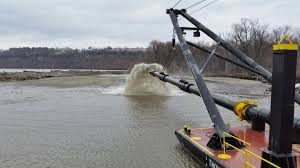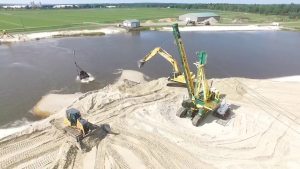
A study by the U.S. Geological Survey showed that drilling companies could save money by using sediment from water reservoirs and rivers rather than the more costly frac sand from the upper MidWest.
The study focused on the dredging operations of reservoirs in the Missouri River Basin. It found that using the dredged sand could defray costs on both ends…for those who have to carry out the dredging operations and for those who need frac sand for drilling operations.
The sediment has to be dredged to clean up waterways, public water supplies ane hydroelectric power generation.
“Sediments carried by the Loup River, whose headwaters are in the Sand Hills in Nebraska, are already being used as a source of proppant sand for industry,” said Ron Zelt, a USGS scientist and the lead author of the study. “Like the Loup River, parts of the Niobrara River are also in the Sand Hills.”

USGS scientists investigated the potential of reservoir sediments in the delta headwaters of Lewis and Clark Lake in Nebraska and South Dakota, downstream from the Niobrara River, to produce sources of proppant sands similar to those from the Loup River. They collected and analyzed 71 sediment samples at various depths from 25 locations, and found that 48 percent of the samples were the adequate size, shape and strength to be used as frac sand.
The scientists also analyzed particular methods that can be used to identify and assess sediments for fracking-related commercial products.
“Information from the new study could shift how deposited reservoir sediment is mitigated, and how recovered sediments potentially could be viable to various industries,” Zelt said.





